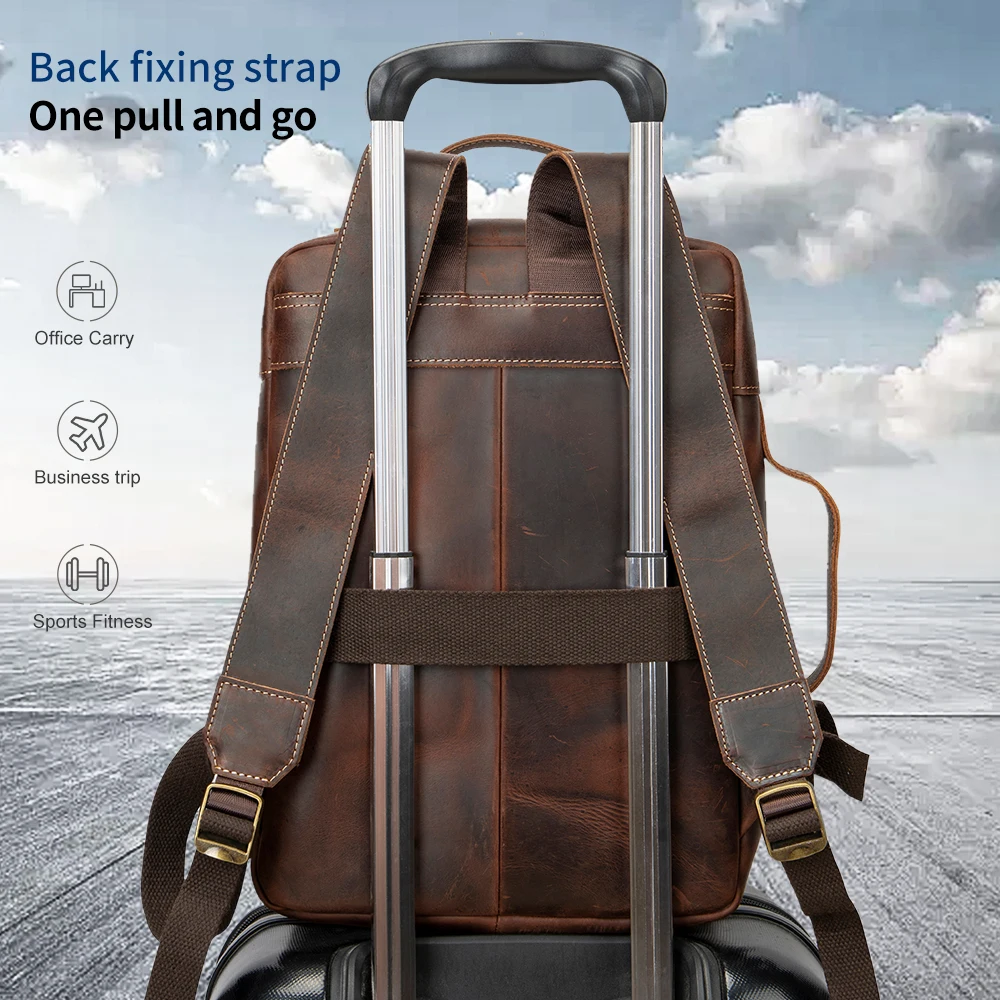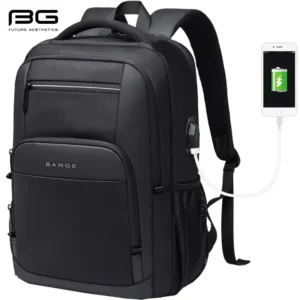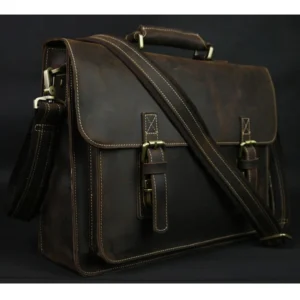Introduction: The Science of Comfortable Load-Bearing
Back pain from improper backpack use is surprisingly common, affecting roughly 30% of students and professionals who regularly carry loaded packs. This silent epidemic often goes unaddressed until the discomfort becomes unbearable, with thousands seeking medical treatment annually for backpack-related injuries – an estimated 14,000 cases each year in the United States alone.
The physical consequences of wearing a backpack incorrectly extend beyond temporary discomfort. Over time, improper load distribution compresses spinal discs, creates chronic muscle strain, and reinforces poor postural habits. The human spine’s natural S-curve becomes distorted as it compensates for imbalanced weight, potentially leading to long-term structural issues that can persist even when not carrying a bag.
In this comprehensive guide, you’ll discover science-backed techniques to properly wear and adjust your backpack to prevent pain. We’ll explore the biomechanics of load-bearing, provide a step-by-step fitting system, and share expert insights on weight management and ergonomic features. Proper leather conditioning and waterproofing contributes to comfort and longevity, ensuring your backpack serves you well for years to come.
Quick Relief: 5 Immediate Adjustments for Back Pain
If you’re currently experiencing discomfort, implement these five adjustments for immediate relief:
Reset your fit completely – Loosen all straps and start fresh with proper adjustments rather than making minor tweaks to an improperly fitted pack.
Raise the weight higher – Position your backpack to sit higher on your back, closer to your center of gravity, reducing the leverage effect that pulls you backward.
Engage your hip belt properly – When correctly positioned, your hip belt should transfer approximately 80% of your backpack’s weight to your legs, which are better equipped to handle the load.
Balance shoulder pressure – Ensure weight is distributed evenly between both shoulders by adjusting straps to equal tension, eliminating muscular compensation.
Eliminate back gaps – Your backpack should rest snugly against your back without space for movement or shifting, which creates unpredictable strain patterns.
Knowing how to pack a backpack evenly complements these adjustment techniques for maximum comfort.
Understanding Why Backpacks Cause Pain: Biomechanics Explained
The Spine’s Natural Design vs. Added Weight
Your spine naturally forms an S-shaped curve that efficiently distributes your body weight. When you add a backpack, especially one that’s heavy or improperly positioned, it pulls your upper body backward. To counteract this backward pull, your body leans forward, flattening the spine’s natural curves and creating muscle strain as your back works overtime to maintain balance.
The Leverage Effect
Improperly worn backpacks create leverage points that multiply the actual weight you feel. Research shows that a 20-pound backpack worn too low or too loose can exert forces equivalent to 30+ pounds on your spine and shoulders. This happens because the further the weight sits from your center of gravity, the more leverage it gains against your body structures, creating pain points where muscles and joints must compensate for these mechanical disadvantages.
Learning to measure and fit a backpack for ultimate comfort helps prevent these biomechanical issues before they start.
The Perfect Fit: Your 5-Step Backpack Adjustment System
Following a systematic approach to backpack adjustment ensures proper weight distribution and significantly reduces back strain. Professional hikers, military personnel, and backpack designers all use similar methodical approaches because they work. The complete adjustment process takes less than two minutes once learned but provides hours of pain-free carrying.
The key is performing these steps in sequence, as each builds upon the previous adjustment. Proper conditioning of leather backpacks keeps straps flexible and comfortable, making these adjustments easier to perform.
Step 1: Prepare Your Pack (Empty & Loosen Everything)
Begin with a clean slate by completely loosening all adjustment points. This reset ensures you’re not building upon previous incorrect settings.
Before putting on your backpack:
* Loosen shoulder straps completely
* Release hip belt tension entirely
* Slacken load lifter straps (the small straps at top of shoulder straps)
* Unfasten and loosen sternum strap
* Check that all buckles move freely and straps aren’t twisted
This preparation stage is crucial—many fitting problems occur because people skip this reset step and adjust an already improperly positioned pack.
Step 2: Set the Perfect Height (Hip Belt Positioning)
The foundation of proper backpack fit starts with correct hip belt placement:
First, find your iliac crest (hip bones) by placing your hands on your waist and feeling for the top ridge of your pelvis. The hip belt should ride centered on these bones—not above or below them.
Put on your backpack and position the hip belt so the padded sections wrap around your hip bones. Tighten the belt until it’s snug but not painful. You should feel the belt grip your hips firmly while still allowing comfortable breathing and movement.
When properly positioned, this belt should support 70-80% of your backpack’s weight through your hips and legs, which are much stronger than your back and shoulders. You’ll know it’s right when you feel the weight pressing down through your legs rather than hanging from your shoulders.
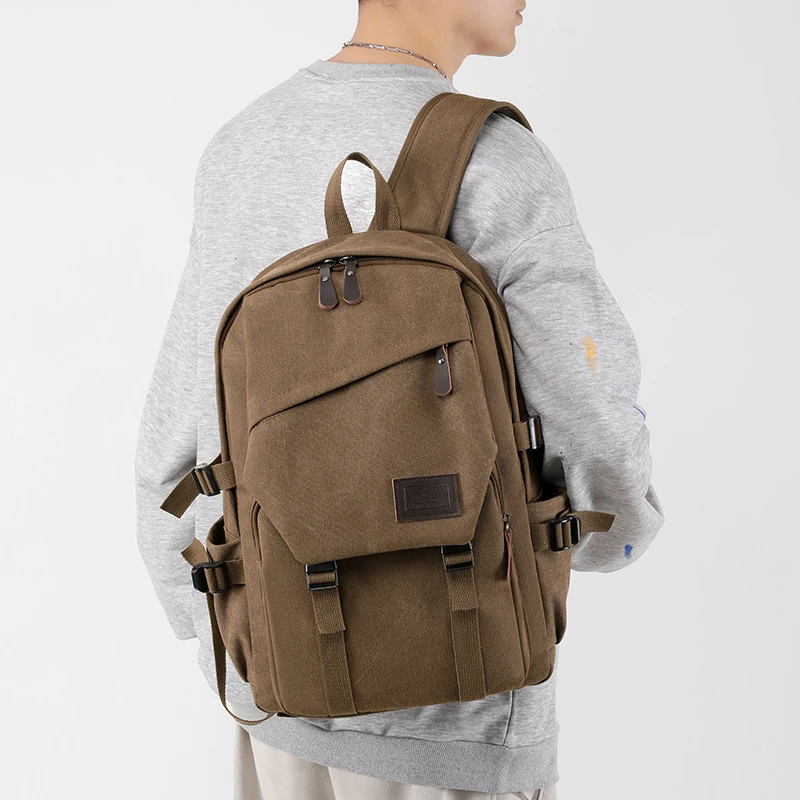
Step 3: Align Your Shoulders (Strap Adjustment)
With your hip belt properly positioned and tightened:
Pull your shoulder straps downward and slightly backward to snug the pack against your back. The straps should lie flat against your chest and shoulders without gaps, but not so tight that they dig in or restrict movement.
The perfect adjustment allows you to slip 1-2 fingers between the strap and your shoulder—any more space means they’re too loose; any less means they’re too tight. The shoulder straps should wrap over your shoulders and continue down your chest at a slight angle, without pinching your armpits.
Common mistakes include straps that are far too loose (causing the pack to sag and pull backwards) or overly tightened shoulder straps (which lift the pack off your hips, negating the benefit of the hip belt).
Maintaining your leather straps with proper care ensures they remain supple and comfortable against your body.
Step 4: Fine-Tune with Load Lifters (Upper Control)
Load lifters are the small straps that connect the top of your shoulder straps to the top of your backpack. Though often overlooked, they play a crucial role in comfort:
Find the load lifter straps and adjust them until they form approximately a 45° angle from your shoulders to the pack. If the angle is too shallow or too steep, they won’t function properly.
When correctly tightened, load lifters bring the top of your backpack closer to your body, preventing it from pulling away from your back. This improves stability and posture by keeping the weight close to your center of gravity.
You’ll feel immediate relief when load lifters are properly adjusted—the weight feels more like it’s hugging your body rather than hanging from your shoulders. Be careful not to overtighten, which can create pressure points on your shoulders.
Step 5: Secure with Sternum Strap (Balance & Stability)
The sternum strap adds the final touch to your backpack’s stability:
Position the sternum strap approximately 1-2 inches below your collarbone. Too high and it may cause uncomfortable pressure on your neck; too low and it restricts breathing.
Fasten the strap and adjust it just tight enough to keep your shoulder straps from sliding outward. You should be able to slide two fingers underneath the strap when properly tightened.
The sternum strap prevents your shoulders from being pulled backward, especially important when carrying heavier loads. However, some women may find sternum straps uncomfortable across the chest—if that’s the case, this adjustment can be minimal or skipped if your pack fits well otherwise.
Strategic Packing: The Core-to-Periphery Method
How you pack your backpack is just as important as how you wear it. Follow these guidelines for optimal weight distribution:
- Place the heaviest items (laptops, books, water bottles) centered against the back panel, between your shoulder blades
- Distribute weight evenly from left to right to prevent leaning or uneven muscle strain
- Use compartments to prevent items from shifting during movement
- Pack medium-weight items in the middle zone of the backpack
- Keep frequently accessed items in outer pockets for easy retrieval without disturbing weight distribution
- Fill empty spaces with soft items like clothing to prevent load shifting
This packing strategy complements proper wearing technique by keeping the heaviest weight close to your center of gravity and preventing unexpected shifts that force your muscles to compensate.
Our leather laptop backpacks feature compartmentalization specifically designed for optimal weight distribution.
The 15% Rule: Managing Your Backpack’s Weight
Even perfectly adjusted backpacks can cause pain if they’re simply too heavy. Research-backed guidelines suggest limiting backpack weight to 10-15% of your body weight:
| Body Weight | Maximum Backpack Weight (15% Rule) |
|---|---|
| 100 lbs | 15 lbs |
| 125 lbs | 19 lbs |
| 150 lbs | 22.5 lbs |
| 175 lbs | 26 lbs |
| 200 lbs | 30 lbs |
Signs your backpack is too heavy include:
* Difficulty standing up straight while wearing it
* Feeling the need to lean forward to balance
* Tingling or numbness in shoulders or arms
* Being unable to put it on without struggling
* Feeling breathless or strained after a short walking distance
Consider our carry-on leather backpacks for lightweight yet spacious options that won’t strain your back.
Ergonomic Features That Matter: What to Look for in Your Next Backpack
When selecting a backpack, these ergonomic features make proper wearing much easier:
- S-curved shoulder straps – Follow the natural contour of your chest and shoulders, distributing pressure more evenly than straight straps
- Padded back panels with ventilation channels – Reduce pressure points along your spine while allowing airflow to reduce heat and sweating
- Adjustable torso length – Allows customization to your specific body dimensions, particularly important for people with shorter or longer torsos
- Wide, padded hip belts – Distribute weight across a larger area of your hips, preventing pressure points and improving comfort
- Compression straps – Secure and stabilize your load, preventing shifting that causes muscle strain
- Multiple compartments – Enable strategic packing for better weight distribution
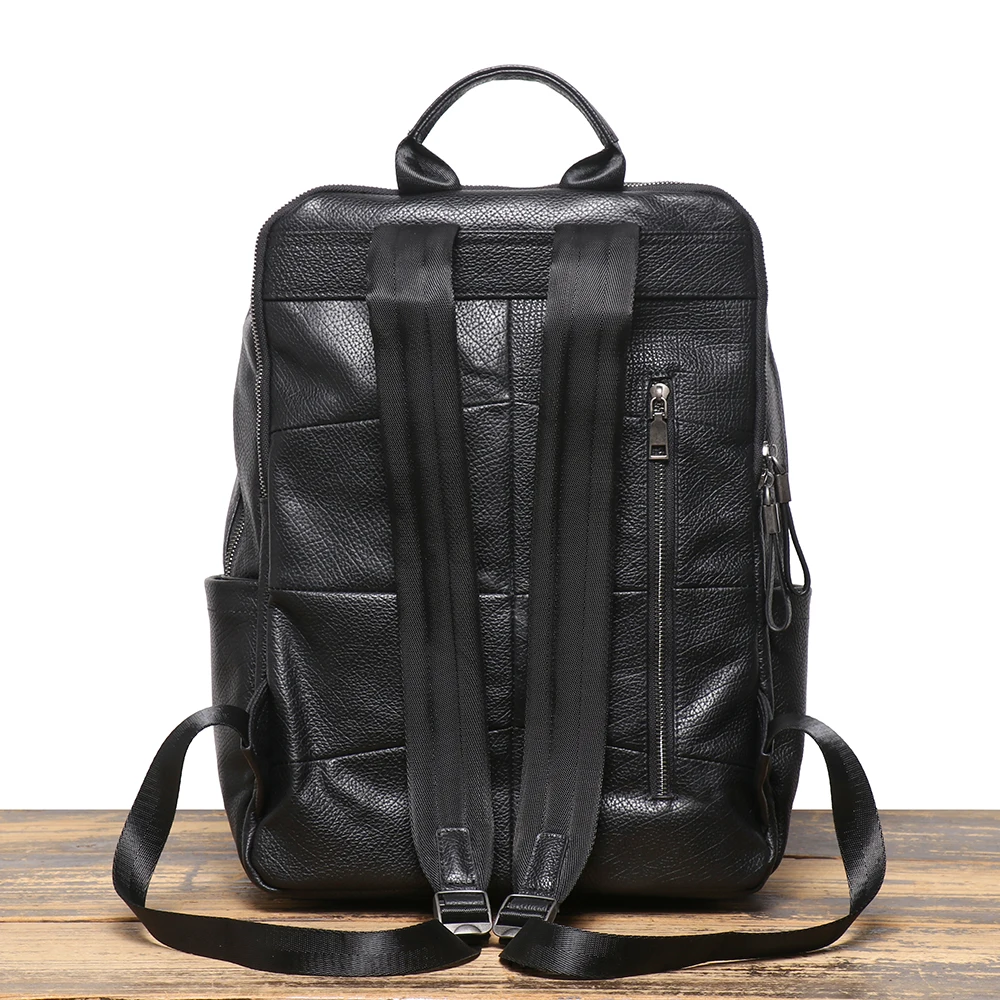
Summit Carry’s leather backpacks incorporate these ergonomic features while maintaining timeless style.
14 Inch Leather Laptop Backpack, Brown Leather Backpack, Men's Leather Backpack, Vintage Leather Backpack
Price range: $177.28 through $199.12 Select options This product has multiple variants. The options may be chosen on the product pageCarry On Leather Backpack, Roll Top Leather Backpack
Price range: $77.76 through $96.48 Select options This product has multiple variants. The options may be chosen on the product pageDesigner Men's Backpack, Men's Leather Laptop Backpack, Men's Leather Work Backpack
Price range: $158.04 through $160.04 Select options This product has multiple variants. The options may be chosen on the product pageDesigner Mini Backpack, Mini Leather Backpack, Small Leather Sling Backpack, Women's Leather Backpack
Price range: $95.76 through $98.80 Select options This product has multiple variants. The options may be chosen on the product pageDesigner Mini Backpack, Designer Women's Backpack, Mini Leather Backpack, Women's Leather Backpack
Price range: $135.92 through $137.64 Select options This product has multiple variants. The options may be chosen on the product page15 Inch Leather Laptop Backpack, Leather Briefcase Backpack
$332.96 Select options This product has multiple variants. The options may be chosen on the product page
Common Mistakes: Four Ways People Wear Backpacks Wrong
Avoid these common errors that significantly increase the risk of back pain:
Wearing too low on the back – When a backpack sags below your waist, it creates leverage that pulls your spine out of alignment. The lower it hangs, the more force it exerts on your lower back.
Using only one shoulder strap – Single-shoulder carrying creates severe imbalance, forcing your spine to curve laterally while one set of muscles works overtime. This leads to both acute and chronic pain patterns.
Leaving straps too loose – Loose straps allow the backpack to bounce and sway with movement, creating unpredictable forces your muscles must constantly adjust to counteract, leading to fatigue and strain.
Overloading and poor weight distribution – Heavy items placed in the wrong position (like in outer pockets or at the bottom of the pack) create leverage points that multiply the effective weight your body feels.
Our leather travel backpacks are designed with balanced weight distribution in mind to help prevent these common wearing mistakes.
Safe Lifting: How to Pick Up and Put On Your Backpack
Many back injuries occur during the moment of lifting and donning a backpack:
- Place your backpack on a raised surface like a table or chair if possible
- If lifting from the ground, bend at the knees while keeping your back straight
- Face the backpack with the straps toward you
- Grip the haul loop (top handle) and lift with your legs, not your back
- Hold the pack close to your body at waist height
- Slip one arm through a shoulder strap, then use your other hand to stabilize the pack
- Swing the pack onto your back and slip your other arm through the second strap
- Adjust straps as outlined in the 5-step system above
This proper lifting technique prevents the sudden strain that can trigger back spasms or more serious injuries when handling heavier backpacks.
Before & After: Visual Guide to Proper Backpack Fit
When your backpack fits correctly, you’ll notice these visual indicators:
- Your posture remains naturally upright, not leaning forward or to one side
- The pack sits high on your back with the bottom no lower than your waist
- Shoulder straps follow the contours of your shoulders without gaps
- No visible pulling or bunching of clothing under straps
- The pack appears to be “part of you” rather than hanging off your body
Warning signs of poor fit include:
* Visible gaps between the pack and your back
* Shoulder straps that stand away from your body
* A backpack that hangs low, with bottom below your waist
* Visible forward lean to counterbalance the weight
* Bunched fabric under tight straps
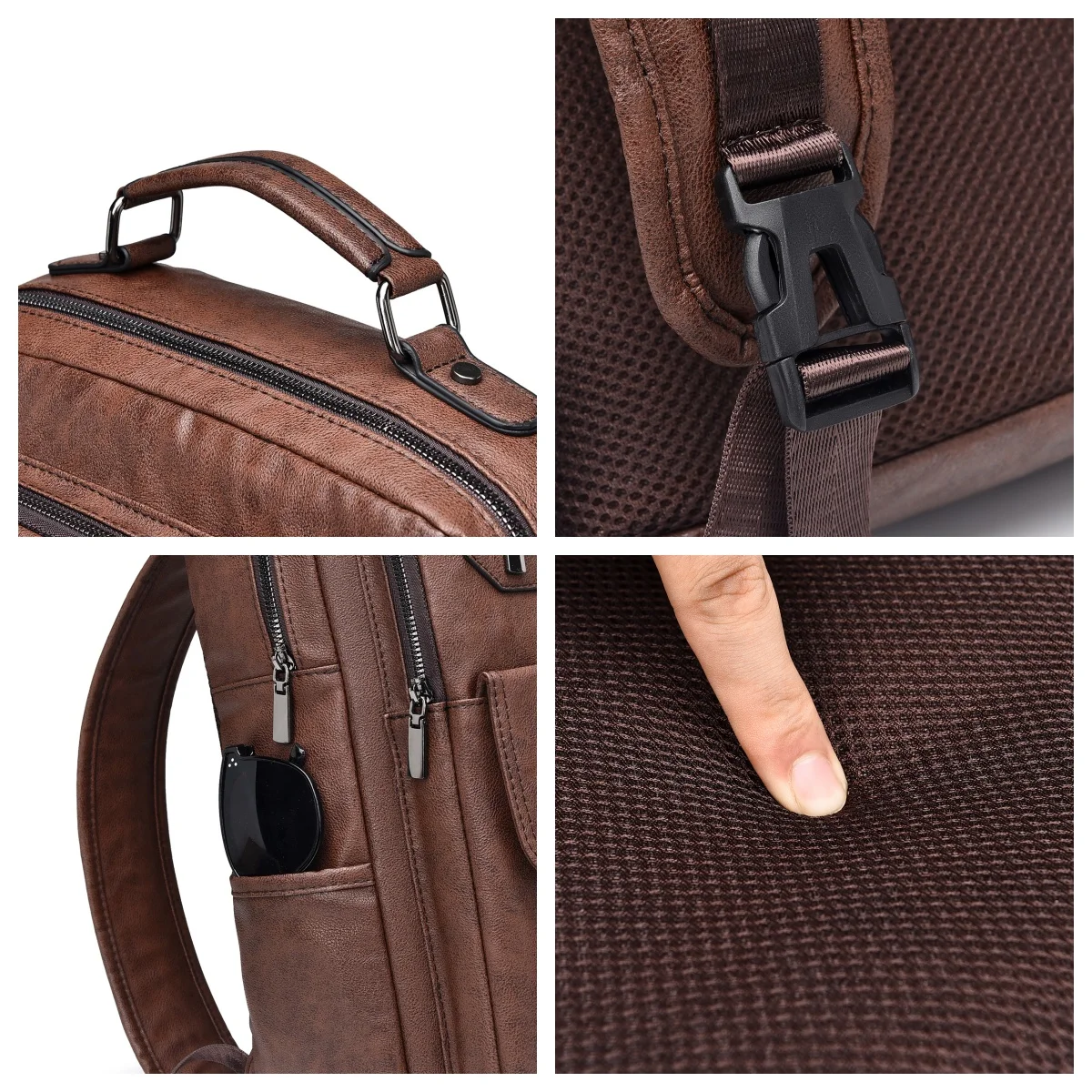
Our men’s leather backpacks are designed with proper ergonomic principles for optimal fit.
When to See a Doctor: Warning Signs Beyond Normal Discomfort
While some adjustment discomfort is normal when carrying a loaded backpack, certain symptoms warrant medical attention:
- Pain that persists for more than an hour after removing your backpack
- Numbness or tingling in your arms, hands, legs or feet
- Pain that radiates from your back into your legs, especially below the knee
- Weakness in your limbs or difficulty with balance and coordination
- Any changes in bowel or bladder function coinciding with back pain
- Pain that wakes you from sleep or prevents normal daily activities
These symptoms could indicate nerve compression or other issues requiring professional assessment. Don’t ignore persistent pain—proper backpack wearing should alleviate, not create, ongoing discomfort.
Your Personalized Backpack Checklist: Daily Wear Guidelines
Use this quick reference guide before putting on your backpack each day:
□ Backpack weight is less than 15% of body weight
□ All straps loosened before putting on pack
□ Hip belt centered on hip bones and securely tightened
□ Shoulder straps adjusted with no gaps, but not too tight
□ Load lifters creating approximately 45° angle
□ Sternum strap positioned below collarbone and comfortably snug
□ Heaviest items packed against back panel between shoulder blades
□ Weight evenly distributed side-to-side
□ No shifting or swaying of pack when moving
□ Back and shoulders feel comfortable after 5 minutes of wear
Ongoing DIY leather care for your travel backpack ensures your pack remains comfortable and supportive for years to come.
